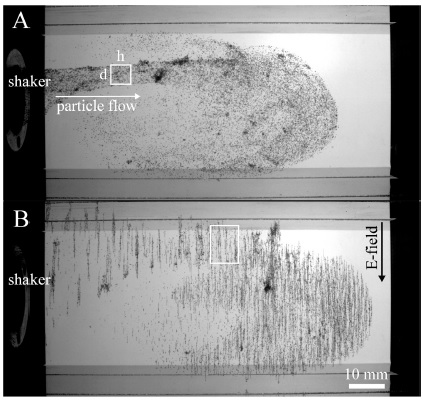https://doi.org/10.1016/j.icarus.2021.114766 and https://arxiv.org
Felix Jungmann, Maximilian Kruss, Jens Teiser, Gerhard Wurm
Dust emission mechanisms as one aspect of wind-driven particle motion on planetary surfaces are still poorly understood. The microphysics is important though as it determines dust sizes and morphologies which set sedimentation speeds and optical properties. We consider the effects of tribocharging in this context as grains in wind driven granular matter charge significantly. This leads to large electric fields above the granular bed. Airborne dielectric grains are polarized in these electric fields, which leads to attractive forces between grains. To simulate aggregation under these conditions we carried out drop tower experiments using tracer particles, mimicking the gas coupling behavior of small dust grains in terms of high surface to mass ratios and efficient gas drag. Under microgravity, the particles are released into an observation chamber in which an alternating electric field up to 80 kV/m is applied. Without electric field no aggregation can be observed on timescales of seconds. However, polarization instantly leads to aggregation of particles when the field is switched on and long chains aligned to the electric field form. Scaled to dust entrained into planetary atmospheres, fine and coarse grain fractions might readily form aggregates after being liberated. Under certain natural conditions, aggregates might therefore start chain-like or at least a chain-like appearance is favored. If atmospheric influences on their stability are small, aerodynamic and optical properties might depend on this.

Hollow spheres emerging from the shaker.